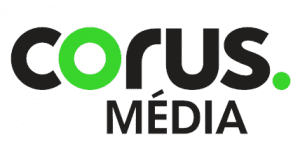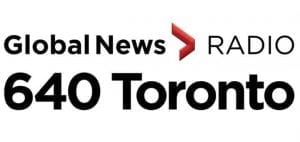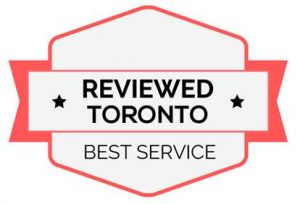
Cash Surrender Value Expert
Get Access To Our On-Demand Training To See How Our Expert Financial Advisors and Coaches Can Help You Understand What Cash Surrender Value Is And How To Maximize Cash Value In Your Life.
Cash surrender value is the exact amount of money you will get if you decide to cancel a permanent life insurance policy before it matures or before you pass away. Cash surrender value is an asset you own. On a permanent life insurance contract there is a number of ways to describe cash surrender value, and each of these has a slightly different meaning. They are all connected and in this blog we will describe the many ways Cash Value is described. Firstly, let’s begin with what is cash value?

Cash Value is the cash asset component of a Permanent Life Insurance Contract. If you are filling in your assets and liabilities on a balance sheet to determine your net worth you would want to make sure you understand the different forms of Cash Value and what to place under your assets. Total Cash Value is the term used to describe all of the types of cash value added together to give you the total gross cash value amount. With Par Whole Life, total cash value would take any guaranteed cash value from the base insurance contract and add it with any paid up cash values that have been created as well as any dividend cash values. When put together they form what is know as the total cash value.
With all of these labels for cash value it often creates confusion for the general public. If there is one term used for cash values that is the most misunderstood, it would be the cash surrender value. Cash surrender value refers to the total “net” amount of money a policy owner would receive on any given day if there were to “surrender” the policy contract. In essence, that means terminating or ending the policy and giving up any life insurance (death benefit) that come with it. Cash surrender value is often confusing as it is hard to calculate. In general, cash surrender value is the Total cash value we described above minus any outstanding policy loans, minus any “surrender charges” (which typically only apply to universal life) plus any premiums left in reserve.
When premiums are paid either monthly or annually some of those funds are applied by the insurance company on a per diem basis and they slowly get “dripped” into the policy. It’s almost as if the excess premium is in a side account and slowly being applied to the policy. This premium amount that is still making its way into the contract can confuse many policy owners.

Yes, the cash surrender value can become taxable in Canada. It depends on both when a policyholder is receiving the cash value, and how they are receiving it. The most common instance of this is when a policy owner is receiving that cash surrender value because they have terminated, or collapsed, the policy. In this circumstance, Any amount of the cash surrender value that is greater than a calculation referred to as the adjusted cost basis (ACB), automatically triggers a taxable income event. This amount which is greater than the ACB is added as regular income in that same calendar year that the policy owner chooses to terminate the policy
In broad terms, that means that the policy itself has likely become very efficient to be in a position where this taxable event occurs.
Over time, cash surrender values increase and eventually are in excess of what the policy owner has contributed by way of premiums over their lifespan. The reason this becomes a taxable event is because the life insurance benefit which is not taxable has been collapsed. Therefore, any growth or gains on the policy, which no longer exists, must become taxable to the policy owner at the time they collapse the policy. Had the policy owner kept the policy in force, then the death benefit would pay out tax free, and no taxable event would occur.
Insurance policies can be surrendered or terminated by the policy owner as noted earlier. It is the policy owner’s right to do so. This can be done intentionally by completing the termination form from the respective life company or it can also happen unintentionally by a non payment of premium. If the minimum required premiums are not paid then the policy owner is not meeting their obligation under the policy contract and as such the policy could lapse. If there is not enough cash surrender value available to initiate an automatic premium loan to keep the policy going it will lapse and there will no longer be coverage for the life insured person. , if there is an irrevocable beneficiary designation this can often limit or restrict the rights of the policy owner as the irrevocable beneficiary must sign off and agree to any changes.
It is important to understand what the ramifications of this decision can be.
Therefore, if considering cancellation of a policy, It is critical to make sure new coverage is approved and a policy contract physically received and signed off by the owner. Before canceling any existing insurance contracts an owner should consider options of term conversion, or any other methods of keeping a policy in force. This could include reducing the original face value of the contract death benefit, reducing any additional rider premiums that make up the total premium or considering an option referred to as reduced paid up insurance. The good news is policy owners often have many options available for them that should be considered before doing the “nuclear” option of blowing up a policy by surrendering it.
Life insurance companies provide illustration software tools that are used to produce the illustrations that are submitted with any life application. These software tools effectively calculate the cash values or at least the estimated cash values that will be available in a policy based on inputs entered in the customization of a plan or strategy involving life insurance. Among these inputs would be the premium deposits annually for all the various benefits selected. Also the duration of deposits is very important to the results you will see. The longer deposits are made and the bigger they are then the greater the size of the cash values that will be created over time.
Life Companies can also create inforce illustrations for existing policies. The advisor or owner can request them directly from the life company. However, the key things you may want to see on an inforce illustration should be clearly specified. The more specific the better. Often, administrators, and service departments of the life carrier, do not produce an in-force illustration so that it can makes sense to a policy owner. It is important to see and understand what options and riders might exist in a policy from an inforce illustration, so that it can be properly reviewed with any licensed life advisor. Always seek a qualified life insurance professional to review any policy statements or illustrations. They can clearly identify and speak to the many values on those illustrations and provide the policy owner ample opportunity to ask all the questions.
Yes of course Cash Surrender Value is an asset. It is one of the least understood assets in the financial world today. This is strange as cash values with par whole life was a foundation of the savings aspect of North American households for a very long time. Somewhere after the second world war, the consumer driven world brought on by the baby boomers in the 1950s began the trend away from these solid financial staples. Traditional par whole life was a common instrument in a family’s financial household. If you are taking stock of your current net worth it is critical to list the cash surrender value of any permanent insurance contracts you have either personally or in your corporation.
From a corporate world the cash surrender value is often one of the best performing assets. It is typically associated or referenced as a key alternative to a fixed income portfolio. It can have substantial tax savings to the corporate owner. A way to protect the business by having an efficient stockpile of liquid capital plus the massive advantage of tax free death benefit. If a key employee or business owner were to pass away early many problems are left behind, this influx of cash stabilizes the business and allows it to keep running when these unfortunate events happen.
Sooner or later we all have to face the inevitable. Our days on this spinning ball called planet earth eventually come to an end. If you have a cash value life insurance policy, it may be helpful to know how that money is used to pay death claims. In a Par whole life policy, the cash value is a representation of the eventual death benefit that must be paid. One way of looking at it would be like a house. When you get a house, the bank has the contract for the mortgage, and they collect a stream of payments over 25-30 years. As you make the mortgage payment each month that goes by it gets more efficient and you have more money applied to the principle. This slowly over time begins to build equity in the house. Eventually the house is paid for. Now when you die if the house is paid for you would get the equity in the house when its eventually sold (or your beneficiaries will). The same general premise applies to par whole life insurance. The cash value is the equity, it is a present value representation of what the Life Company has been putting aside for the purpose of paying your eventual death benefit. They must grow the cash value for the purpose of paying the death claim because it’s guaranteed. This means the cash surrender value is the thing that is used to pay the eventual death benefit. In Canada, that is why the cash value must equal the death benefit by age 100 when the contract endows. In the USA these contracts are now to age 121 when the two numbers must match.
The beneficiary only gets the death benefit paid out because the cash value is a direct representation of the eventual death benefit in a given moment in time. Just like when you sell a house you get the equity, but you don’t also get all of your mortgage payments back from the mortgage company.
How is cash surrender value calculated?
When it comes to whole life the cash surrender value is calculated by taking the total cash value plus and premiums on reserve waiting to be applied to the policy for the current pay period. Then you would subtract any outstanding indebtedness on the policy in the form of a policy loan. This number would already include any outstanding interest accumulated on that loan that must be returned back to the participating account for the benefit of all the other participating owners.
It is important to note that Cash Surrender Value in relation to a universal life contract always takes into consideration any surrender charges that may exist. It is very common for UL’s, IUL,s and other forms of universal life in Canada to have very high surrender charges for the first 10 years of the contract.
These surrender charges from Universal Life contracts are a way to recover the cost of acquisition of the policy by the insurance company. All of the costs of getting the policy added onto the books are accurately calculated and effectively charged to the policy owner who gets the contract. It's charged up front, as is the case with the premium costs for whole life policies where to total cost of acquiring the policy and meeting the guarantees are factored into the initial premiums, or it can be charged in a combination. In UL’s there is essentially an upfront actuarial cost (based on the premium cost to get the policy) and on the back end using surrender charges which creates an incentive for the policy owner to keep the policy in force at least past the ten year mark. This is one of the ways that the risk of the policy in a Universal Life contract is attributed to the policy owner and shifted away from the Insurance Company.
The best way to avoid surrender charges is first to understand if the contract has surrender charges before you commit to getting a policy. If it’s too late and you already have a policy and are concerned about surrender charges, then it’s important to confirm with the life company if any charges exist and verify the amount. Also confirm when they will drop off. It may be possible to access cash value in a universal life contract by way of a policy or collateral loan that is greater than the surrender charges as long as the policy stays in force. This would need to be assessed on a case by case basis. If a policy owner has this available, they can avoid the surrender charge temporarily but still have access to some of the liquidity of the policy. Then eventually when the surrender charges of the universal life contract disappear a proper reassessment of the policy can be made.

Get Access To Our On-Demand Training To See How Our Expert Financial Advisors and Coaches Can Help You Understand What Cash Surrender Value Is And How To Maximize Cash Value In Your Life.









© 2024 Ascendant Financial Inc. All rights reserved.
The supporting material, audio and video recordings and all information related to Introduction to Becoming Your Own Banker, The Infinite Banking Concept (IBC) posted on www.ascendantfinancial.ca and all other Ascendant Financial Inc. websites are designed to educate and provide general information regarding The Infinite Banking Concept (IBC) and all other subject matter covered. It is marketed and distributed with the understanding that the authors and the publishers are not engaged in rendering legal, financial, or other professional advice. It is also understood that laws and practices may vary from province to province and are subject to change. All illustrations provided in these materials are for educational purposes only and individual results will vary. Each illustration provided is unique to that individual and your personal results may vary. Because each factual situation is different, specific advice should be tailored to each individual’s particular circumstances. For this reason, the reader is advised to consult with qualified licensed professionals of their choosing, regarding that individual’s specific situation.
The authors have taken reasonable precautions in the preparation of all materials and believe the facts presented are accurate as of the date it was written. However, neither the author nor the publishers assume any responsibility for any errors or omissions. The authors and publisher specifically disclaim any liability resulting from the use or application of the information contained in all materials, and the information is neither intended nor should be relied upon as legal, financial or any other advice related to individual situations.
Family Banking System (FBS)™ is a trademark of Ascendant Financial Inc. © Ascendant Financial Inc., 2024. All rights reserved. The phrase “Live the Lifestyle, Love the Process, Infinite Banking” is a registered copyright (Registration No. 1209863) with the Canadian Intellectual Property Office. Unauthorized use, reproduction, distribution, or copying of this phrase, in whole or in part, without express written permission from Ascendant Financial Inc. is strictly prohibited. This copyright is protected under Canadian intellectual property laws and regulations. Any unauthorized use is subject to legal action and enforcement under Canadian law. For inquiries or requests for permission to use this copyright, please contact Ascendant Financial Inc.
The Infinite Banking Concept® is a registered trademark of Infinite Banking Concepts, LLC. Ascendant Financial is independent of and is not affiliated with, sponsored by, or endorsed by Infinite Banking Concepts, LLC.”
This content is intended for Canadian residents of BC, AB, SK, MB, ON, NB, NS, NU, YT, PEI & NFLD only.